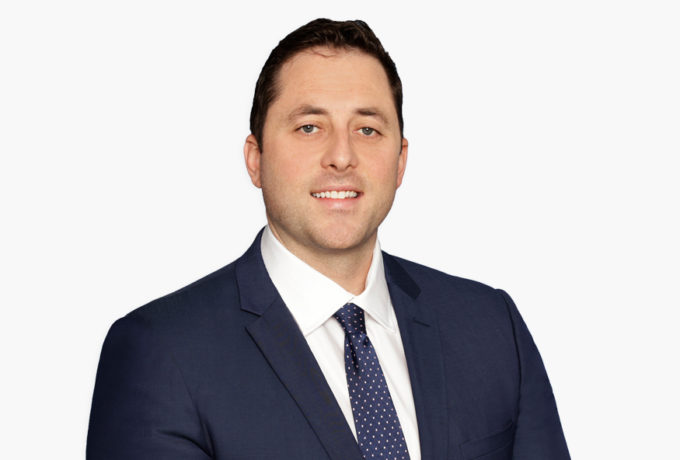
An Introduction To Managed Futures
Pitcher Partners Wealth Management (Brisbane) | The information in this article is current as at 5 April 2023.
The Alternatives asset class covers an immense array of different strategies, markets and investment approaches.
At Pitcher Partners Investment Services, we seek to identify differentiated, best of breed alternative managers, those that don’t just perform strongly through a market cycle, but can generate those returns in a manner that is insensitive to the day-to-day gyrations of equity and bond markets – the end result being a smoother glidepath in the value of your portfolio over time.
One particular sub-category within Alternatives is the managed futures sector (otherwise known as Commodity Trading Adviser or CTA). We believe an allocation to these strategies provides investors with the ability to generate superior risk adjusted returns, in a liquid and low correlated manner with traditional asset classes.
We acknowledge the greater degree of complexity that is associated with some products in the Alternatives asset class. We hope this note helps explain what these strategies are, what they do (and don’t do) and what role they can potentially play in your portfolio.
What are Managed Futures?
Managed futures are an investment strategy that was introduced to investors back in the early 1990’s. These products seek to profit from observable price trends (momentum), both rising and falling, across a wide array of investment markets including equities, bonds, currencies and commodities. A wide array of academic literature points to the efficacy of investing in momentum based strategies (see Appendix 1).
The investment approach is typically systematic as it requires an immense level of computing power to monitor and trade across so many markets at once, while operating in accordance with strict risk parameters. Supporting the quantitative application of this strategy is typically a large number of PhD and MSc-level mathematicians employed by these fund managers to conduct ongoing research to uncover new signals, investment strategies and further improvements to the risk management capabilities of the products.
Investing in momentum, both rising and falling, is highly complementary when viewed against the traditional approach of ‘buy and hold’ or valuation-based decision making that many investors have with respect to shares and bonds. Not only do managed futures offer exposure to a far greater array of asset classes and financial markets, the ability to profit from the fall in value of certain assets, such as oil, gold, equities or $US, helps to generate a return profile that is generally uncorrelated (insensitive) to major asset classes and helps to provide significant diversification benefits to a portfolio overtime.
A feature of these strategies is that they use leverage to broaden and diversify their portfolios, however it’s important to note that many products in this segment are strictly managed to pre-defined risk limits/targets, which typically range somewhere between long run bond and equity market volatility levels.
The table below provides a snapshot of the range of investment markets for one of our approved managers in this sector.

Source: PIMCO
How does Trend Investing Actually Work?
Trend investing is a form of momentum, where specialist fund managers use technical signals (including the use of moving averages) to identify trends, which are predominantly price-based. The Fund will invest in a long position when it judges a market is exhibiting positive momentum, and equally it will short a market when it is exhibiting negative momentum. When the momentum slows or reverses, the position is reduced or closed entirely. If a market is very rangebound with no clear discernible or sustained trend in any direction, the Fund is unlikely to have any material exposure to that market.
Importantly, this is a rules-based system. It is not taking into account traditional fundamental investment analysis or using valuation as a guide. In a way, you can argue that managed futures are a good way to profit from investors behavioural bias, as markets ebb and flow through different investment cycles.
The chart below gives a example of how a managed futures strategy might work. The chart below refers to the WTI Oil Price since 2013 to the beginning of this year.
The black line is the actual price of oil, the red line is its 90day moving average, the green line is its 15day moving average.
When the green line crosses over or under the red line, this means that the short term price is moving away from its longer term average – thereby signalling a form of momentum. If the price continues to move higher or lower, the fund manager will be initiating and then increasing an exposure to Oil. When the price begins to revert or stabilise, you can see the green line will converge back toward its longer term average and the position size will be reduced/removed.
The basic notations in the chart below signal how a theoretical managed futures manager would have been invested in Oil over the last decade.

Source: IRESS, PPIS Research
If you replicate this approach across tens or hundreds of individual markets, that is what your managed futures investment will be doing day in, day out for 365 days a year!
Benefits of Including Managed Futures in Portfolios
Managed futures help provide superior returns and reduce overall portfolio risk. The most important benefit of including managed futures in portfolios is the strong diversification benefits it provides. Managed futures tend to complement traditional investment strategies of ‘buy low’ and ‘sell high’ as they generally have negative or no correlation to equities and bonds, given they invest in a directional manner across a wide array of markets and asset classes. An extreme example of how they work came in 2022, when equity and bond markets fell, but managed futures funds produced attractive positive returns!
Three Year Correlations Returns

Source: PPIS Research. 3yr time period chosen to capture the time series of the approved range of funds.
The table highlights the correlations of our approved open ended Alternative managers and a couple of the main asset classes. Our preferred managed futures funds have negative or low positive correlations against all of these products and asset classes over the last 3 years – clearly highlighting their diversification appeal.
Managed futures have the potential to perform well in any sustained market sell off. While not specifically by design, a managed futures strategy systematically adjusts its positioning to the market dynamics at hand in a rules-based approach – fundamental-based investment managers would typically react slower and in a much more inconsistent manner. Therefore, managed futures strategies are far less susceptible to human behaviourial and cognitive biases. The chart below highlights how the major managed futures managers have performed in the most extreme monthly equity market moves over the last 15 years or so.

Source: PPIS Research, IRESS
Managed futures are liquid, diversified and accessible to retail investors. In our opinion, they remain one of the few genuinely institutional grade alternative strategies available to retail investors in Australia via a daily priced product.
Disadvantages of Managed Futures in Portfolios
Managed futures strategies are not absolute return strategies. Like most investment products, they have periods where they perform well and those they don’t. They typically perform at their weakest when markets suddenly change direction or when there is range bound / choppy markets. The current range of accessible managed futures strategies in Australia generate or target volatility levels that ranges between that of long run bond and equity market averages. Any drawdown in returns do tend to be far less pronounced than equities though, with exception of one or two products.
These products are complex. They use financial models and signals, use derivatives, leverage and generally trade very frequently. Tax efficiency is generally lower as distributions are paid back as taxable income to investors. There is generally some opaqueness around the some of the timing of signals used within the investment process as the managers wish to protect their I.P. However the best products in this sector do provide a lot of transparency around their positioning, risk profile and drivers of performance.
Fees on these strategies are high when compared to traditional equity or bond managed funds. These are complicated strategies supported by a lot of technology infrastructure and research teams. While fees have been falling over time, the costs you pay are reflective of the specialist capability of the managers, which typically involve a management fee in excess of 1% and a performance fee.
How do Managed Futures work in a Diversified Portfolio?
To provide a simple demonstration of how managed futures have helped reduce risk and improve performance of a portfolio, on this chart we show the 1, 3 and 10yr annualised risk and return profile of a hypothetical balanced portfolio (60% equities, 40% bonds), comparing it to a portfolio that includes a 10% allocation to managed futures (a composite of all CTA managers available to Australian investors).
Across all time periods, the portfolio with managed futures has generated a higher return, with less risk (standard deviation).
Adding Managed Futures to a balanced portfolio can improve risk adjusted returns

Source: PPIS Research. Data as at January 2023.
In reality, we would recommend a smaller allocation to managed futures alongside a more diversified portfolio, however its clear that adding managed futures alongside equities and bonds can improve your risk adjusted investment returns over the long term.
Summary
Managed Futures are a complex strategy, but when you look under the hood, there is a very good chance an allocation to one of these strategies can help diversify and augment the performance of your portfolio over the medium to longer term.
Should you wish to discuss these types of strategies further, please contact your Pitcher Partners adviser for more information.









